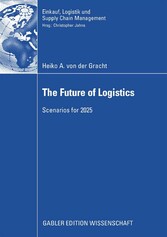Search and Find
Service
3. The Delphi Technique for Futures Research (S. 21-22)
This chapter represents the second of the three chapters on theoretical foundation within this thesis. It concerns the Delphi technique, one of the most prominent tools of futures research. The intention behind is to build the fundament for later Delphi research in the scope of scenario development. The chapter therefore has a strong focus on methodological aspects of Delphi.
3.1. Historical Roots of the Delphi Technique
To know what the future is like has always been a desire of humankind. Throughout history, people have consulted chosen individuals who were said to be able to anticipate the future. Among the most famous are such names as Michel de Notredame (1503-1566) or Marie Anne Adélaide Lenormand (1772-1843). Especially in ancient times the influence of prophets and priests making predictions about the future was high. For over thousand years oracles had their firm place in the life of Romans and Greeks. From the eighth century B.C. until the third century A.D., people consulted oracles on primarily fortune, success, marriage affairs, professional advancement, and judicial disputes (Grupp, 1995, pp. 30-31, Strathern, 2007, p. 231).
During that time the oracles even diversified by methodology. Buchen (1974, p. 430) reports on specialisation in form of the use of audial means, signs, dreams, and evocation of the dead. The life of people was dominated by the belief in gods that judge over fate and the course of lives. This was actually not a phenomenon dependent on the status of an individual. Craftsmen and emperors alike relied on the prophecies and advice that were given by priests being in direct contact with the gods. In these times, oracular sites were spread all over Greece with the two greatest being the one at Delphi, associated with Apollo, and the one at Dodona, associated with Zeus (Buchen, 1974, p. 430).
The high point of oracular activity is assumed to have been between the seventh century and the mid-fourth, whereas in later periods the power of oracles waned. Finally, Emperor Theodosius issued an edict against them in A.D. 391 (M. Wood, 2004, p. 6). The Greek word Delphoi means "hollow" or "womb". Historians interpret it as a reference to the archaic veneration of Gaia, the Grandmother Earth. In Greek mythology Zeus himself had identified Delphi as the centre of the Hellenic world by releasing two eagles at its opposite ends. They met over Delphi, 170 kilometres northwest of Athens on the slopes of Mount Parnassus, indicating the centre of the earth. It is further told that later Apollo, the son of Zeus and Leto, chose this site above all others for his most truthful oracle (Strauss & Zeigler, 1975, p. 184). Apollo, the god of light, spring, purity, wisdom, and arts, was also known for his ability to foresee the future. It was said that he had metamorphosed into a dolphin in order to recruit his first priests, which were primarily seamen (Grupp, 1995, p. 28). However, it was a woman, the Pythia, who could get in contact with Apollo.
All prices incl. VAT













